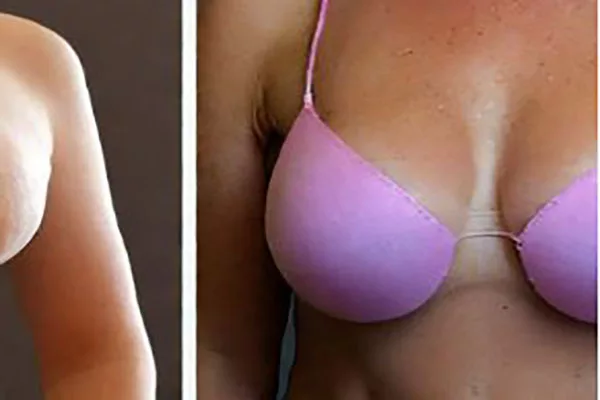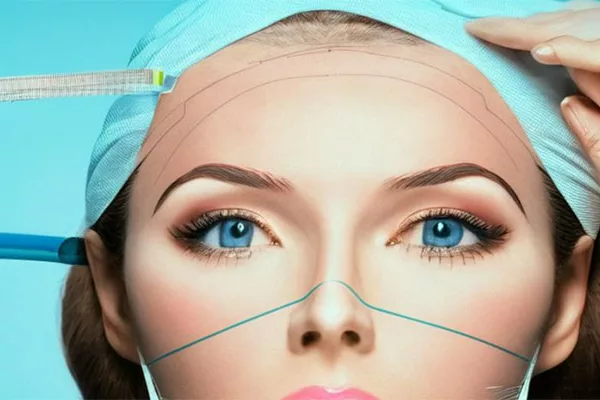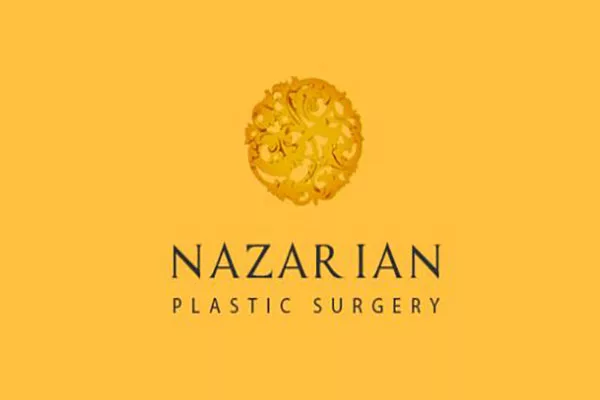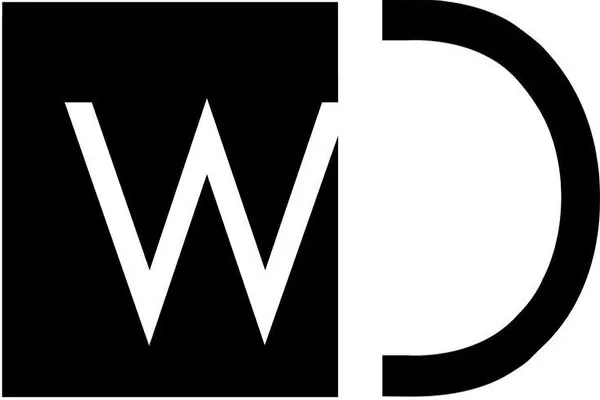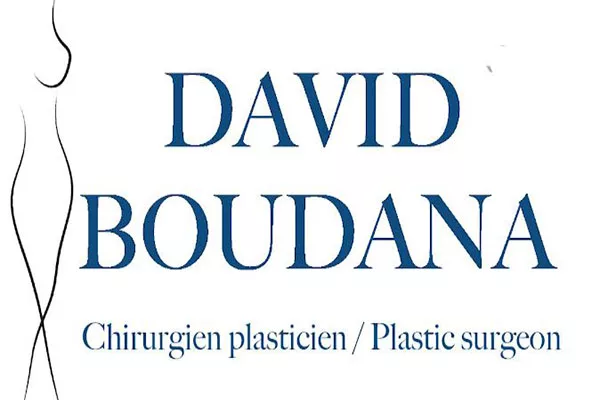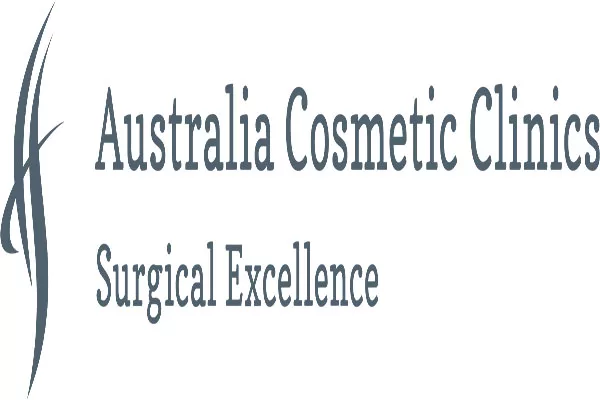Breast Surgery
Breast surgery is a type of procedure that can be used to treat a variety of issues related to the breasts. Some of the most common reasons for breast surgery include breast cancer treatment, breast reduction or augmentation, or breast reconstruction after a mastectomy.
Breast cancer surgery often involves removing some or all of the affected breast tissue, along with nearby lymph nodes. This can be a difficult and emotional process for many women, but it is often an important step in treating the cancer and preventing it from spreading.
Breast reduction surgery can reduce the size of the breasts to alleviate physical discomfort or improve the appearance of the breasts. Breast augmentation surgery, on the other hand, involves placing implants to increase the size or improve the shape of the breasts.
Breast reconstruction surgery can be performed after a mastectomy to restore the breasts to their original shape and size. This can involve using tissue from other parts of the body, such as the abdomen or back, to create new breast tissue. Alternatively, implants can be used to replace the removed breast tissue.
Overall, breast surgery can be an effective way to address a variety of issues related to the breasts. However, it is important to carefully consider the risks and benefits of any breast surgery procedure before undergoing treatment.
Types of Breast Surgery
There are several types of breast surgery that can be used to address different issues. Some of the most common types of breast surgery include:
- Lumpectomy: This is a type of breast-conserving surgery that is used to remove a small portion of breast tissue while leaving the rest of the breast intact. This procedure is often used as part of breast cancer treatment.
- Mastectomy: This surgery involves removing all of the breast tissue, sometimes including the nipple and areola. There are several types of mastectomy, including simple or total mastectomy, modified radical mastectomy, and radical mastectomy.
- Breast reconstruction: This surgery is used to rebuild the breast after a mastectomy. There are several different types of breast reconstruction surgery, including implant-based reconstruction, autologous reconstruction (using tissue from another part of the body), and a combination of the two.
- Breast reduction: This surgery is used to reduce the size of the breasts in order to alleviate physical discomfort or improve the appearance of the breasts.
- Breast augmentation: This surgery involves placing implants to increase the size or improve the shape of the breasts.
- Breast lift: This surgery is used to lift and reshape sagging breasts. It can be performed alone or in conjunction with breast augmentation or reduction.
Preparing for Breast Surgery
If you are considering breast surgery, it is important to take several steps to prepare for the procedure. Some of the things you can do to help ensure a successful surgery and a smooth recovery include:
- Research the type of breast surgery you are considering: Take the time to learn about the benefits, risks, and potential outcomes of the surgery you are considering. Talk to your doctor and ask questions to ensure that you have a thorough understanding of what to expect.
- Choose a qualified surgeon: Look for a board-certified plastic surgeon with extensive experience performing the type of breast surgery you are considering. Ask for recommendations from friends, family, or healthcare professionals, and schedule a consultation to discuss your options.
- Get a pre-operative exam: Your surgeon may require a physical exam or medical tests to ensure that you are healthy enough for surgery. Be sure to follow all pre-operative instructions provided by your surgeon.
- Follow pre-operative guidelines: Your surgeon will provide you with specific instructions to follow in the days and weeks leading up to your surgery. Follow all guidelines carefully to ensure that you are in the best possible condition for your surgery.
- Arrange for post-operative care: Make sure you have someone who can help you with daily activities for the first few days after your surgery. You may also need to arrange for transportation to and from your surgery, as well as post-surgical appointments.
By taking these steps and working closely with your surgeon, you can help ensure the best possible outcome from your breast surgery.
The Breast Surgery Procedure
The specifics of the breast surgery procedure will depend on the type of surgery being performed. However, there are some general steps that are typically followed for most breast surgeries:
- Anesthesia: Your surgeon will administer anesthesia to ensure that you are comfortably asleep and pain-free during the procedure.
- Incisions: The surgeon will make incisions in the breast tissue as needed, depending on the type of surgery being performed.
- Removal of tissue or placement of implants: The surgeon will perform the necessary procedure, such as removing breast tissue or placing implants.
- Incision closure: Once the procedure is complete, the surgeon will close the incisions with sutures or surgical tape.
- Bandaging and recovery: A bandage or compression garment will be applied to the breast to help control swelling and promote healing. You will be taken to a recovery area where you will be monitored by medical staff until you are ready to go home.
The length of the procedure will depend on the specific surgery being performed, as well as your individual circumstances. Your surgeon will discuss the details of the procedure with you beforehand and provide information on what to expect during and after the surgery.
Recovering from Breast Surgery
Recovery from breast surgery can vary depending on the type of surgery performed and your individual circumstances. However, there are some general guidelines and tips that can help promote healing and improve recovery time:
- Follow all post-operative instructions carefully: Your surgeon will provide specific instructions on how to care for your incisions, how to manage any pain or discomfort, and when to return to normal activities. Follow all instructions carefully to ensure the best possible outcome.
- Rest and take it easy: Resting and avoiding strenuous activity is important in the days and weeks following surgery to give your body time to heal. Be sure to get plenty of rest and avoid any lifting or other activities that could strain your incisions.
- Use pain medication as directed: Your surgeon may prescribe pain medication to help manage any discomfort or pain during the recovery period. Be sure to take medication as directed and avoid any over-the-counter pain relievers without first consulting with your surgeon.
- Wear supportive garments as prescribed: Compression garments or bras may be prescribed by your surgeon to help manage swelling and promote healing. Be sure to wear these garments as directed.
- Attend all follow-up appointments: Your surgeon will likely schedule several follow-up appointments to monitor your progress and ensure that you are healing properly. Attend all appointments and notify your surgeon of any unusual symptoms or concerns.
Breast surgery recovery can take several weeks or even months, depending on the type of surgery performed. Be patient with your body and follow your surgeon’s instructions carefully to ensure a safe and successful recovery.
Risks and Complications of Breast Surgery
As with any surgery, there are risks and potential complications associated with breast surgery. Some of the common risks and complications include:
- Bleeding: Excessive bleeding during or after surgery can be a serious complication.
- Infection: Infection at the incision site is a risk for any surgical procedure.
- Poor wound healing: Some patients may experience slow or poor healing of the incision site, which can result in scarring or other complications.
- Anesthesia complications: Allergic reactions, breathing difficulties, or other complications related to anesthesia can occur during surgery.
- Changes in breast sensation: Breast surgery can sometimes result in changes to breast sensation, including numbness or heightened sensitivity.
- Implant complications: For patients undergoing breast augmentation, there is a risk of complications related to the implant, such as rupture or leaking.
- Capsular contracture: This is a condition in which scar tissue forms around the implant, causing hardness or deformity in the breast.
- Changes in breast shape or size: Breast surgery can sometimes result in changes to the shape or size of the breast, which can be permanent.
It is important to discuss the risks and potential complications of any breast surgery procedure with your surgeon before making a decision to undergo treatment. However, it is worth noting that many patients successfully undergo breast surgery with few or no complications.
Cost of Breast Surgery
The cost of breast surgery can vary widely depending on the type of surgery being performed, the location of the procedure, and other factors. Some of the factors that can impact the cost of breast surgery include:
- Type of procedure: Different types of breast surgery have different costs associated with them. For example, breast reduction surgery tends to be more expensive than breast augmentation.
- Surgeon fees: The fees charged by the surgeon performing the procedure can be a significant portion of the overall cost of the surgery.
- Anesthesia fees: The cost of anesthesia during the procedure can also impact the overall cost.
- Facility fees: The cost of using the surgical facility, including equipment and staff, is typically factored into the overall cost of the procedure.
- Geographic location: The cost of breast surgery can vary depending on local market factors, such as supply and demand and the cost of living.
- Health insurance coverage: In some cases, health insurance may cover some or all of the cost of breast surgery if it is deemed medically necessary.
It is important to carefully consider the potential costs of breast surgery before undergoing any procedure. Be sure to discuss the cost of the surgery with your surgeon and check with your insurance provider to see if the procedure is covered under your plan. Additionally, some surgeons may offer financing options to help cover the cost of the surgery.
Before and After Breast Surgery
Before and after breast surgery photos can be a useful tool for patients who are considering breast surgery. These photos can help patients get a better idea of the potential results of the surgery and how it can affect their overall appearance.
It is important to keep in mind, however, that every patient is unique and that results may vary. Before and after photos should be viewed as a general example of the potential outcomes of a particular surgery, and not a guarantee of results.
When looking at before and after breast surgery photos, it is important to ensure that the photos are from a reputable source and are not manipulated in any way. It may also be helpful to seek out photos from patients with similar body types and medical histories to get a better idea of the potential results for your individual case.
Your surgeon may provide before and after photos of their own patients, or may be able to refer you to other sources for photos. Be sure to discuss any concerns or questions you have about the potential results of breast surgery with your surgeon to ensure that you have a clear understanding of what to expect.
Alternatives to Breast Surgery
While breast surgery can be an effective way to address a variety of issues related to the breasts, it is not the right option for everyone. There are several non-surgical alternatives that may be considered for patients who do not wish to undergo surgery. Some of these alternatives include:
- Breast lift tape: This is a type of adhesive tape that can help lift and reshape sagging breasts without the need for surgery.
- Breast enhancement creams and pills: There are a variety of creams and pills available that claim to enhance breast size or shape. However, the effectiveness of these products is often questionable.
- Breast massage: Regular breast massage can help promote circulation and lymphatic drainage, which can improve breast health and shape.
- Lifestyle changes: Maintaining a healthy diet and exercise routine, as well as avoiding smoking and excessive alcohol consumption, can help improve overall breast health and appearance.
It is important to have a clear understanding of the limitations of non-surgical alternatives and to discuss all possible options with your doctor. In some cases, surgery may be the most effective and appropriate treatment for achieving the desired results.
Conclusion
Breast surgery can be an effective way to address a variety of issues related to the breasts, from cancer treatment to cosmetic enhancements. However, it is important to carefully consider the risks and benefits of any breast surgery procedure before making a decision to undergo treatment.
By working closely with a qualified, experienced surgeon and following all pre- and post-operative instructions carefully, patients can promote a safe and successful surgery and recovery.
Additionally, it is important to consider non-surgical alternatives and lifestyle changes that may be effective in improving breast health and appearance, depending on individual circumstances.
Overall, breast surgery can be an important tool for improving breast health, function, and appearance, but it should be approached with caution and careful consideration of all options available.
References:
- American Society of Plastic Surgeons. (2021). Breast Surgery. Retrieved from https://www.plasticsurgery.org/cosmetic-procedures/breast-surgery
- Mayo Clinic. (2018). Breast surgery. Retrieved from https://www.mayoclinic.org/tests-procedures/breast-surgery/about/pac-20384999
- WebMD. (2019). Breast Surgery: What to Expect. Retrieved from https://www.webmd.com/cancer/breast-cancer/surgery-breast-cancer
- Healthline. (2020). Breast Surgery: Procedure, Recovery, and Risks. Retrieved from https://www.healthline.com/health/breast-surgery
- American Society of Plastic Surgeons. (2021). Breast Surgery Alternatives. Retrieved from https://www.plasticsurgery.org/news/blog/breast-surgery-alternatives
- American Cancer Society. (2021). Mastectomy. Retrieved from https://www.cancer.org/cancer/breast-cancer/surgery/mastectomy.html
- Breastcancer.org. (2021). Breast Reconstruction. Retrieved from https://www.breastcancer.org/treatment/surgery/reconstruction”
Breast lift and implants
Safest textured implants
Fat transfer to breasts
When do implants need to get replaced?
Traveling after surgery
Tell me about your plastic surgery recovery experience
| This page is not advice and is intended to be informational only. Consult your physician before undertaking any surgical procedures. |
Most famous clinics
Marina Plastic Surgery
Dr. Grant Stevens
is the founder and Medical Director of Marina Plastic Surgery and The Institute; A Medical Spa in Marina Del Rey, California.
USA 4560 Admiralty Way Suite 256
Marina Del Rey, CA 90292
Phone : 310-494-2881
Nazarian Plastic Surgery
Dr. Sheila Nazarian
MMM is a Board Certified Plastic Surgeon and the founder of Nazarian Plastic Surgery and Spa26 in Beverly Hills.
USA 120 S. Spalding Dr. #315,
Beverly Hills, CA 90212
Phone: (310) 773-3039
Westlake Dermatology
Westlake Dermatology is a national leader in dermatology and plastic surgery. Our specialization in minimally invasive procedures.
USA 2201 Onion Creek Parkway
Austin, Texas 78747
Phone: 512-649-3376
Central Scottsdale Surgery Center
Dr. Remus Repta
Dr. Repta, our founder, is widely recognized for his exceptional skills, and the quality and artistry of his surgical work.
USA 3271 N Civic Center Plaza #105,
Scottsdale, AZ 85251
Phone:(855) 377-3782
Forest Hill Institute Of Aesthetic Plastic Surgery
Dr. David Boudana
Dr. David Boudana, a board certified plastic surgeon, is a graduate of the prestigious University of Paris Descartes.
Сanada 1188B Eglinton Avenue West
Toronto, Ontario
Phone:(416)785-7864
Australian Cosmetic Clinics
Dr. Shaz Musavi
Dr Shaz is a fully trained Cosmetic Surgeon who brings his extensive aesthetic background and professionalism.
Australia Suite 1, 448 Pacific Highway
Artarmon, NSW 2064
Phone: 1300 559 848

